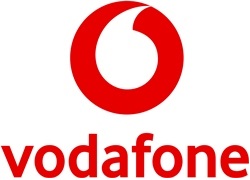Van Gogh comes to Kakuma through the magic of virtual reality

To celebrate UNESCO International Day for Education, the Vodafone Foundation has created the first live-streamed virtual reality (VR) school trip for students at the Kakuma refugee camp.
The camp in Kenya is under the protection of the office of UNCHR, the UN Refugee Agency, and is home to more than 190,000 people who have fled conflict in neighbouring countries.
Guided by artist Lisa Milroy, former trustee of the National Gallery, art students at the camp were able to experience live a tech-enabled programme called Hands on Art Workshops, facilitated by Vodafone Foundation’s Instant Network Schools.
Using Vodafone connectivity – a 5G Gigacube for stable internet connection across the National Gallery; an Insta360 pro2 camera streamed in 360 degrees with real-time stitching – it was possible for the students watching 6,000 miles away to move from room to room in the gallery. Images of some of the world’s most revered works of art were captured in 8K – extremely high resolution – on the camera and streamed in 4K. In Kakuma, the students used Oculus Go VR headsets and were able to experience the gallery workshops like a real school trip – as if they were actually there.
The experience is believed to be the world’s first live VR school trip for refugee students. Artist and guide Lisa Milroy said, “It’s wonderful to be able to use technology to share the phenomenal experience of being inside the National Gallery.“The technology enables the students to see what it is like to wander through the galleries – they’re having a 3D experience of the paintings.”
The special tour started with a look at The Avenue at Middelharnis by Dutch artist Meindert Hobbema (1638 – 1709), and concluded with Messengers by British artist Bridget Riley (b.1931).
The highlight by far, and subject of the final part of the students’ tour, was Vincent Van Gogh’s 1888 masterpiece Chair. After the gallery tour, the students took part in a workshop where they were asked to give their own interpretation of Van Gogh’s Chair. Nyagoa, 18, who was born in the camp after her mother fled the war in South Sudan, said: “It was really wow! I really enjoyed it. It felt like I was there with Lisa, together. It looked just the way that I always imagined and I really enjoyed it because it felt just like I was in London.”
Since 2016, students in Kakuma have been receiving a digital education through Vodafone Foundation’s Instant Network Schools programme, in partnership with UNHCR. The network connects classrooms to the internet and provides tablets for the students, a laptop for the teacher, high-quality and localised digital educational content and teacher training – along with a wealth of curated online content and resources. To date, the programme has benefited nearly 87,000 students and more than 1,000 teachers across 36 schools and eight refugee camps in Sub-Saharan Africa. Vodafone Foundation and UNHCR have committed to expanding the Instant Network Schools programme to benefit more than 500,000 young refugee students.
Comment on this article below or via Twitter @IoTGN
